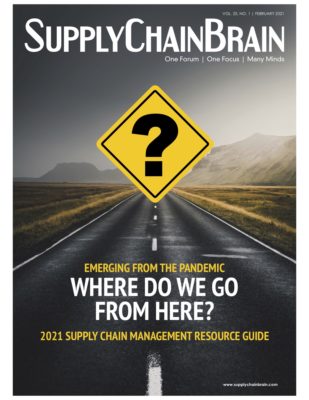Our Publications
Please select a publication below.
Supply Chain Brain Magazine

2021 Supply Chain Management Resource Guide
Volume: 25
Edition: 1

Timely, incisive articles delivered directly to your inbox.







